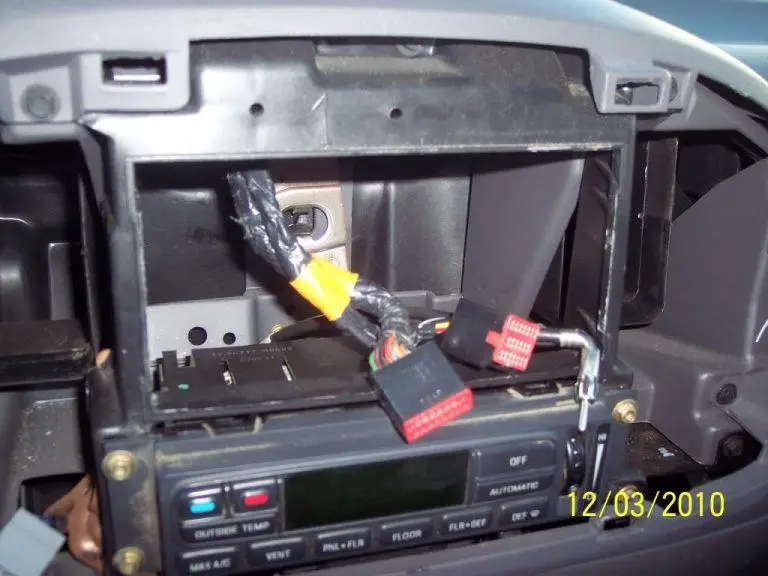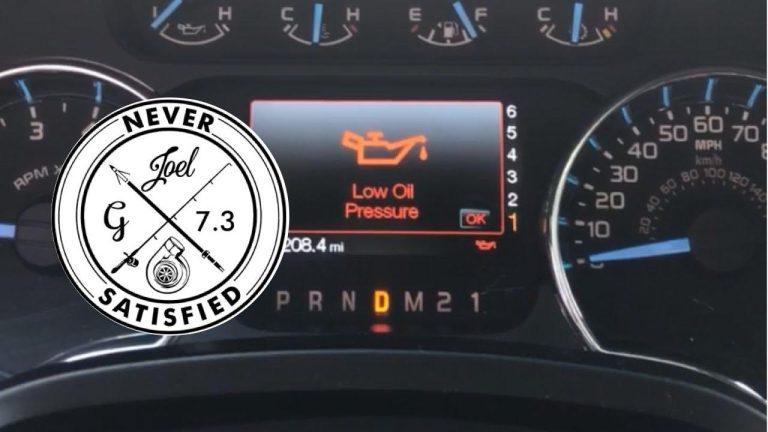Ford F150 Vacuum Leak Symptoms
Last Updated on by David Jon
In this comprehensive guide, attention will be shifted to the Ford F150, specifically looking into the telltale signs of a vacuum leak. By understanding the common symptoms, owners, as well as mechanics who specialize in Ford models, will be furnished with vital knowledge, empowering them to address and fix the issue promptly. This will significantly enhance the health and longevity of your beloved Ford F150 vehicle. Probing this issue with keen professionalism, an enlightening journey into the world of Ford maintenance awaits.

Overview of Ford F150 Vacuum System
The vacuum system of a Ford F150 is a critical component of the vehicle. Its primary role is to generate vacuum pressure that is essential for the operations of various other systems within the truck. The vacuum system is intricate and sophisticated, which highlights the importance of understanding its operations and components. It is also worth noting the crucial role the vacuum system plays in the overall performance and fuel efficiency of the vehicle.
Understanding the Vacuum System
The vacuum system in a Ford F150 functions by creating a vacuum in the intake manifold. This vacuum is generated during the vehicle’s operation, when the vehicle is idling, and even when the engine is off. It serves as a kind of power source for several components and functions within the truck.
Functions of the Vacuum System in Ford F150
The vacuum system in a Ford F150 serves multiple important functions. Principally, it is responsible for assisting in the truck’s braking system. It also contributes to the vehicle’s climate control, emission control, and fuel pressure regulator. In essence, the vacuum system is a crucial part of maintaining the efficiency and performance of the truck.
Key Components of the Vacuum System
The vacuum system in a Ford F150 comprises several key components, including the vacuum pump, vacuum reservoir, check valves, and vacuum lines or hoses. Each of these components plays an integral part in maintaining and regulating the vacuum within the system.
Causes of Vacuum Leak in Ford F150
Despite its importance, the vacuum system is susceptible to leaks. A vacuum leak in a Ford F150 can significantly affect the performance and efficiency of the vehicle. It is crucial to understand the common causes of vacuum leaks to prevent such issues and maintain the vehicle’s optimal functioning.
Normal Wear and Tear
One of the most common causes of vacuum leaks in Ford F150s is normal wear and tear. Over time, the vacuum hoses or lines can harden or become brittle, leading to cracks and in turn, leaks.
Damages Due to Accidents and Collisions
Accidents and collisions can lead to physical damage to the vacuum system and its components, leading to leaks. Such instances require immediate attention and possibly replacement of affected components.
Inferior Quality of Vacuum Components
Using inferior quality components in the vacuum system can elevate the chances of a leak. Inferior parts may not withstand the pressures and conditions within the vacuum system, leading to failures and leaks.
Common Ford F150 Vacuum Leak Symptoms
There are several symptoms that can indicate a vacuum leak in a Ford F150. It is essential to recognize these symptoms early to prevent further damage and costly repairs.
Uneven Idle or Engine Misfires
One of the most common symptoms of a vacuum leak is an uneven idle or engine misfires. Due to the leak, the air-fuel mixture can become lean, leading to uneven idling, reduced performance, and even engine misfires.
Unexpected Increase in Fuel Consumption
A vacuum leak can lead to increased fuel consumption. This is because the vacuum leak can disrupt the optimal air-fuel mixture in the engine, leading to inefficient fuel combustion and thus, increased fuel usage.
Lower Engine Power Output
One of the noticeable symptoms of a vacuum leak in a Ford F150 is a decrease in engine power output. This can be particularly noticeable during acceleration, where the truck may feel sluggish or lack power.
Check Engine Light is ON
A vacuum leak can potentially trigger the Check Engine light on your Ford F150’s dashboard. This warning light indicates that an error code has been stored in the truck’s computer system, which may be related to a vacuum leak.

Advanced Vacuum Leak Symptoms in Ford F150
There are also more advanced symptoms that suggest a more serious vacuum leak. These symptoms often indicate a substantial leak that may have existed for some time and should be addressed immediately.
Decreased Braking Performance
The vacuum system assists in the truck’s braking system. Hence, a significant vacuum leak may impact braking performance, making it harder to apply the brakes and possibly extending braking distances.
A High-Pitched Whistling or Hissing Sound
It is quite common for a vacuum leak in a Ford F150 to produce a high-pitched whistling or hissing sound. This sound is often most noticeable when your truck is idling and might become less intense during acceleration.
Engine Running Hot or Overheating
A severe vacuum leak can disrupt the air-fuel mixture balance in your engine, leading to inefficient combustion that may make your engine run hotter than usual. If left unchecked, an overheating engine can cause serious, potentially irreparable damage to your truck’s engine.
Implications of Ignoring Ford F150 Vacuum Leak Symptoms
Ignoring symptoms of a vacuum leak in your Ford F150 can have significant implications, including potential engine damage, reduced fuel efficiency, and compromised safety.
Potential for Engine Damage
Ignoring a vacuum leak can lead to engine damage over time. The lean air-fuel mixture resulting from the leak can lead to hotter combustion temperatures and consequently, overheat the engine, leading to serious and potentially costly engine damage.
Reduced Fuel Efficiency
A vacuum leak can significantly reduce the fuel efficiency of your Ford F150. This means more frequent visits to the fuel station, resulting in increased fuel costs in the long run.
Compromised Safety While Driving
A vacuum leak can affect braking performance, which might compromise safety while driving. It’s important to address the problem promptly to ensure your own safety and that of others on the road.
Detecting Vacuum Leak in Ford F150
Detecting a vacuum leak in a Ford F150 is often a straightforward process. There are several methods to locate a leak, including visual inspection, using diagnostic tools, or engaging a professional mechanic.
Physical Inspection of Vacuum System
A physical inspection of the vacuum system can reveal any obvious signs of a leak, such as damaged hoses or connections. Look for any cracks, tears, or other signs of wear on the vacuum hoses. Also, listen for any unusual noises, such as a hissing sound that may indicate a leak.
Using Engine Diagnostic Tools
Engine diagnostic tools, particularly an OBD-II scanner, can help detect a vacuum leak. This device can read the error codes stored in the truck’s computer system, indicating possible issues with the vacuum system.
Using a Smoke Machine
A smoke machine can be used to detect a vacuum leak. By pumping smoke into the vacuum system and observing where the smoke exits, mechanics can identify the location of the leak.
DIY Methods for Fixing Ford F150 Vacuum Leak
If detected early, some vacuum leaks can be fixed using simple DIY methods. However, these methods require some technical knowledge and the appropriate tools.
Repairing or Replacing Vacuum Hose
If the vacuum leak is due to a damaged hose, repairing or replacing this hose might resolve the issue. This fix often involves the removal of the damaged hose and replacement with a new one.
Replacing Vacuum Connector and Fittings
Broken connectors or fittings can also cause a vacuum leak. In such instances, replacing these components can effectively fix the leak. It is, however, critical to replace these with high-quality components to prevent future leaks.
Sealing Vacuum Leak with Specialized Adhesives
Another DIY method for fixing a vacuum leak involves using specialized adhesives designed to seal leaks. This method can be effective for minor leaks but may not provide a long-term solution for larger leaks or damages.
Professional Repair Services for Ford F150 Vacuum Leak
For complex or severe vacuum leaks, seeking professional repair services is advisable. Professionals possess the necessary expertise and tools to diagnose and rectify the leak effectively.
Advantages of Professional Repair
One of the major advantages of professional repair is the expertise and experience that professionals offer. They possess the advanced diagnostic tools and equipment, which increases the likelihood of identifying and fixing the vacuum leak. Besides, choosing professional repair services ensures that your repair is backed by a service warranty.
Expected Cost for Vacuum Leak Repair
The cost for vacuum leak repair can vary depending on the complexity and severity of the leak. This cost will typically include the cost of parts and labor. On average, however, you can expect to spend anywhere from $100 to $400 for vacuum leak repairs.
Choosing a Reputable Repair Service
Choosing a reputable repair service is crucial to ensuring that your vacuum leak problem is effectively resolved. Look for certified professionals who have positive reviews and references. A reputable repair service will value your trust and provide excellent service to ensure your vehicle is properly repaired.
Preventing Vacuum Leaks in Ford F150
Vacuum leaks in a Ford F150 are often preventable with regular maintenance and using high-quality vacuum system components. Monitoring fuel efficiency and engine performance can also help in early detection and prevention of leaks.
Regularly Scheduled Maintenance
Scheduling regular maintenance checks for your Ford F150 can help in preventing vacuum leaks. These checks include inspecting the vacuum system and its components for any signs of wear or damage. Regular oil changes, and checking your spark plugs and coils can also help in maintaining the health of your engine.
Using High-Quality Vacuum System Components
Using high-quality vacuum system components can go a long way in preventing vacuum leaks in your Ford F150. High-quality components are designed to withstand the pressures and conditions within the vacuum system, thereby, reducing the likelihood of leaks.
Monitoring Fuel Efficiency and Engine Performance
Keeping a close eye on your truck’s fuel efficiency and engine performance can provide early indications of a vacuum leak. An unexpected decrease in fuel efficiency or the engine performing below its usual standards are often signs of a possible vacuum leak that should be investigated.
Summary of Ford F150 Vacuum Leak Symptoms
Recognizing the symptoms of a vacuum leak in your Ford F150 is crucial in preventing potential engine damage and maintaining the optimal performance of your vehicle.
Recap of Vacuum Leak Symptoms
Common symptoms of a vacuum leak include uneven idle or engine misfires, unexpected increase in fuel consumption, and lower engine power output. More advanced symptoms can involve decreased braking performance, a high-pitched whistling or hissing sound, and engine overheating.
Importance of Prompt Repair and Maintenance
Ignoring the symptoms of a vacuum leak can potentially lead to engine damage, reduced fuel efficiency, and compromised safety. Therefore, recognizing these symptoms and seeking prompt repair and maintenance is crucial.
Final Thoughts on Vacuum Leak in Ford F150
In conclusion, understanding the vacuum system, its functions, and components can go a long way in maintaining the health of your Ford F150. Staying alert to the potential symptoms of a vacuum leak, carrying out regular maintenance, and opting for professional repair services when necessary can help keep your vehicle running efficiently and safely.



